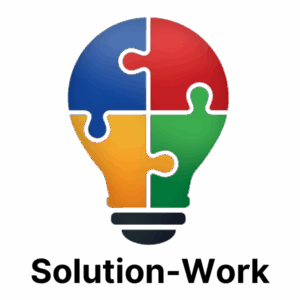When moving workloads to the cloud, often referred to as lift & shift, there are many important aspects to consider.
The process starts with the selection of suitable workloads for the cloud and includes the evaluation of challenges and opportunities as well as extensive preparation for the change. Detailed preparation, choosing the right provider, customizing the workloads, thorough testing in the new environment and effective communication with the users of the IT services are crucial for a successful migration.
1. Selection of the workloads to be migrated
The first step in the cloud migration process is to identify the workloads that are to be moved to the cloud. This involves analyzing all processes, transactions and tasks that are executed on a server, within a network structure or in a cloud environment. It is of utmost importance that this selection is based on a comprehensive assessment of business requirements and technical feasibility. Initially, it is advisable to start with less critical and simpler workloads that can function in isolation. These act as pilot projects to test the functionality, performance and scalability of the cloud infrastructure in a real environment without jeopardizing the main business.
The experience gained from these initial migrations provides IT teams with valuable insights into the planning and transfer of more critical and complex systems. Only after these pilot projects have been successfully completed and the results are satisfactory should further, more important workloads be migrated to the cloud. This step-by-step approach reduces risks and allows the strategy to be continuously adapted based on experience and feedback.
2. Definition of the technical specifications
The workloads selected for migration determine the technical specifications of the cloud infrastructure. This requires a detailed analysis to accurately capture the specific requirements of each workload. It is now necessary to consider all technical aspects, including the architecture of physical and virtual servers, databases, resource management, networks, storage options, APIs and data formats. Elements such as scalability, availability and disaster recovery strategies are also important.
Compatibility between the existing on-premises systems and the cloud infrastructure must be ensured and is crucial for seamless integration and successful migration. These technical requirements should be defined in close coordination with technology partners, always taking into account the company’s long-term goals in order to develop a future-proof and powerful cloud environment.
3. Choosing the right cloud provider
Deciding on a (new) cloud provider is a crucial step that has a significant impact on the success of the overall cloud strategy. Not only must the specific needs and the planned business model in the cloud be taken into account, but also aspects such as costs, reliability, compliance, security standards and technical support. The various cloud models, including private cloud, public cloud, managed cloud and hybrid cloud, each have specific advantages and disadvantages that need to be carefully examined depending on the company’s requirements and data protection regulations.
Where a provider’s data centers are located also plays a major role in reducing latency times and meeting regulatory requirements. In addition, SMEs in Germany can now choose from a good selection of domestic cloud providers that offer solutions tailored specifically to their needs. For IT companies that intend to resell cloud services to end customers under their own brand, a white label solution could also be attractive. A comprehensive market analysis and careful evaluation of potential providers according to predefined criteria are essential in order to make the right decision.
4. Drawing up a migration roadmap
Developing a comprehensive migration roadmap is now the next step in order to make the migration process orderly and comprehensible. Once a suitable cloud provider has been selected and all the basic conditions have been defined, it is necessary to develop a detailed project plan that includes the specific work steps, the required resources, the time frame, milestones, risk management strategies and emergency preparations.
The roadmap should be well structured and show the different migration phases, starting with the initial data backup through to the transfer of the data and the subsequent review and fine-tuning in the cloud. The clear definition of internal and external responsibilities is crucial to ensure that all departments and partners involved understand their specific tasks and responsibilities and implement them accordingly. A carefully planned roadmap promotes a structured process and helps to reduce or eliminate unexpected challenges and difficulties during the migration process.
5. Implementation and control of migration
The migration requires precise implementation and continuous monitoring to ensure that performance meets expectations and that all systems function correctly. This includes monitoring system load, network performance and application behavior.
In addition, it is important to react proactively to errors and make adjustments when deviations or unexpected problems occur. Keeping a detailed log and reacting quickly to changes is important throughout the migration process. This enables an evaluation of migration effectiveness and provides valuable insights for future projects. Thorough preparation for potential difficulties and the establishment of an effective monitoring system are essential to ensure a successful migration.
6. Evaluation and fine-tuning after migration
Once the migration is complete, a thorough evaluation of the performance and efficiency of the migrated systems is necessary to confirm that they meet the previously defined requirements and expectations. This review is critical to verify the functionality and efficiency of the new cloud or edge environment. In addition to confirming the success of the migration, this phase provides crucial insights that can be used to fine-tune cloud resources and prepare for future migration projects.
Finally, a comprehensive analysis should be carried out that includes both quantitative and qualitative data to ensure a complete assessment of system performance. Elements such as system usage monitoring, response time evaluation, security audits and cost analysis are key. Based on these findings, necessary adjustments can be made to the system configuration in order to increase performance, reduce costs and address any security risks. This ongoing review and fine-tuning is crucial to ensure the long-term performance and cost efficiency of the cloud solution.
Conclusion: Successful cloud migration through a structured process
The transfer of workloads to the cloud is a complex process that requires extensive planning, implementation and final evaluation. This checklist provides a structured framework that makes the transition phase both efficient and secure. The methodical approach reduces risk, increases efficiency and ensures continued success in the cloud. By following these steps, organizations will ensure that their cloud migration is not only technically sound, but also strategically aligned with their business objectives and creates lasting value.
















